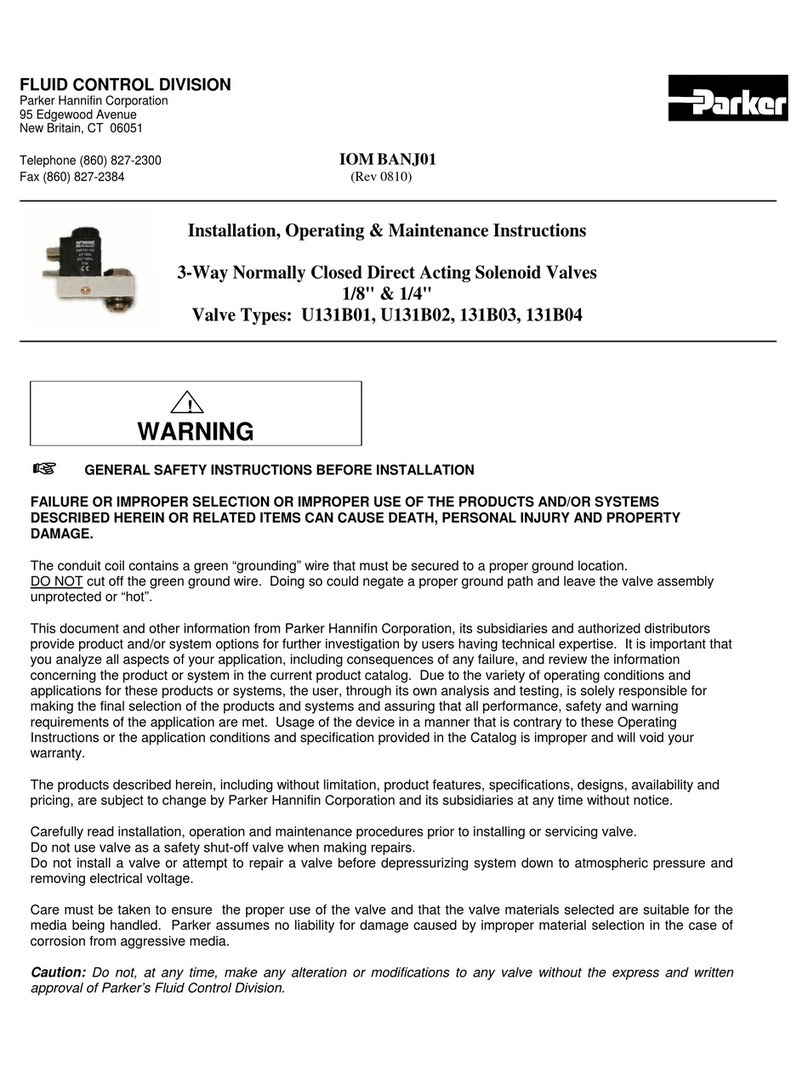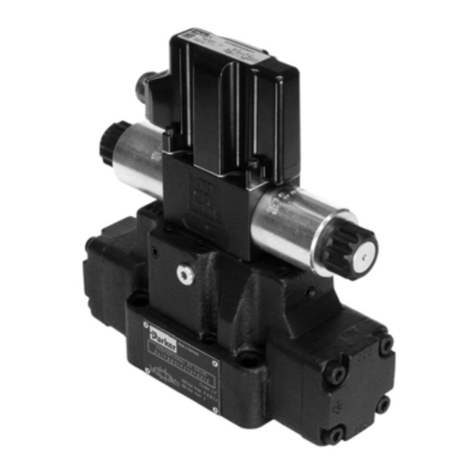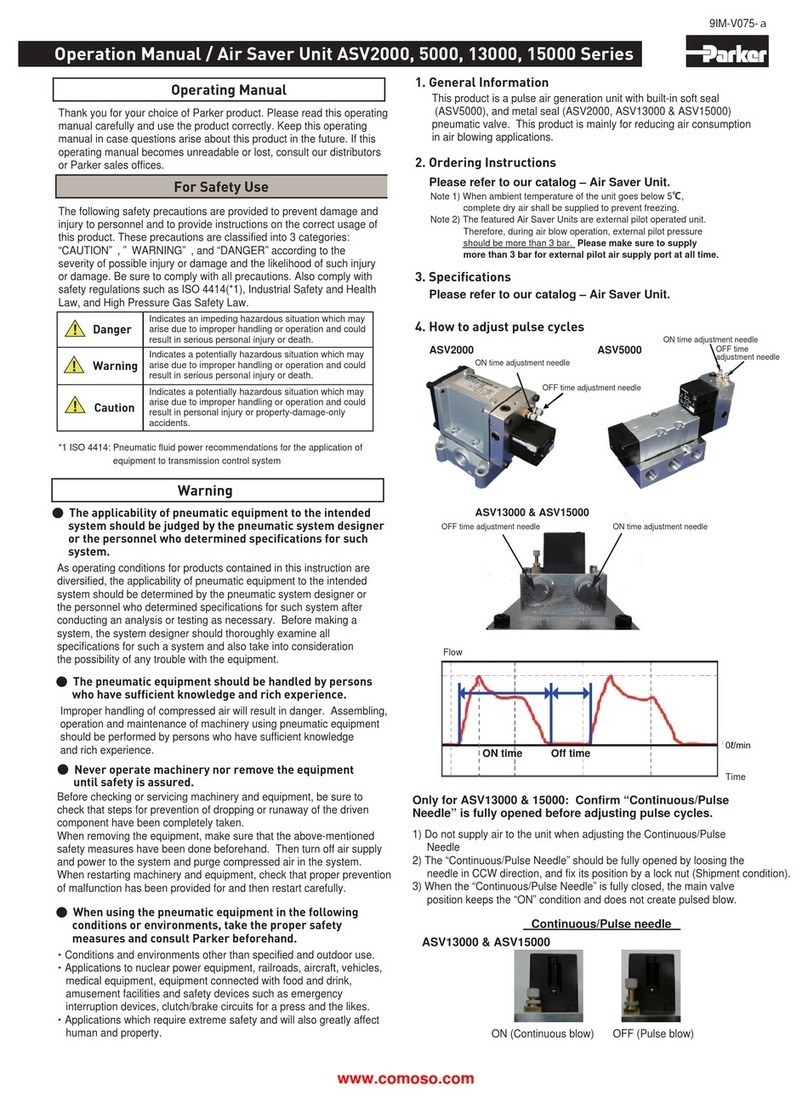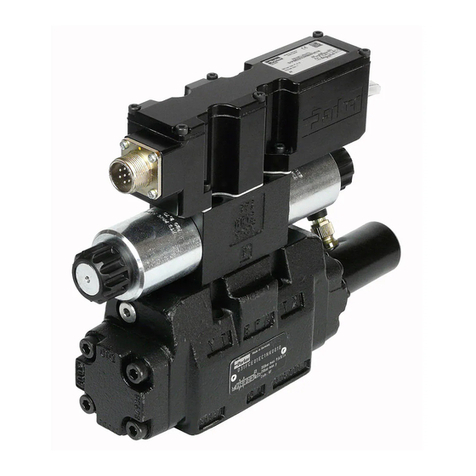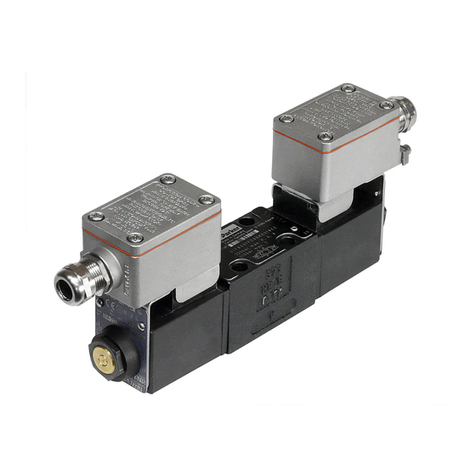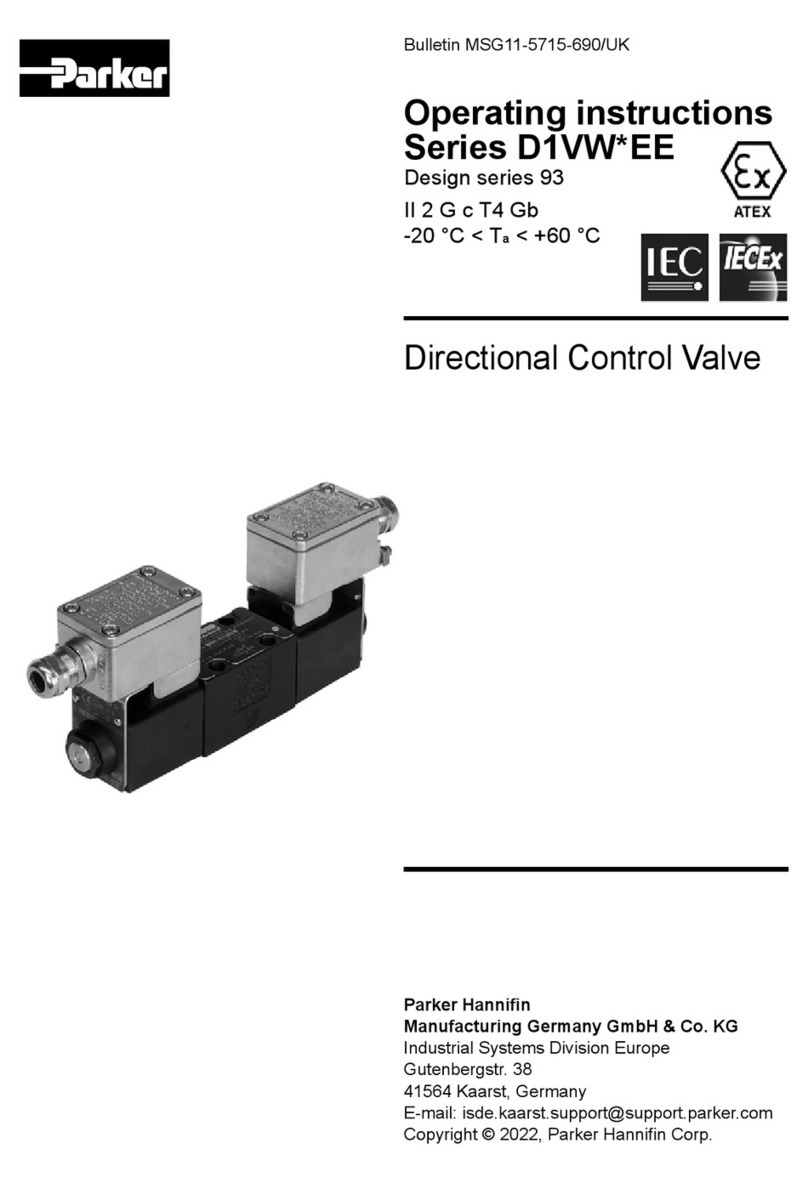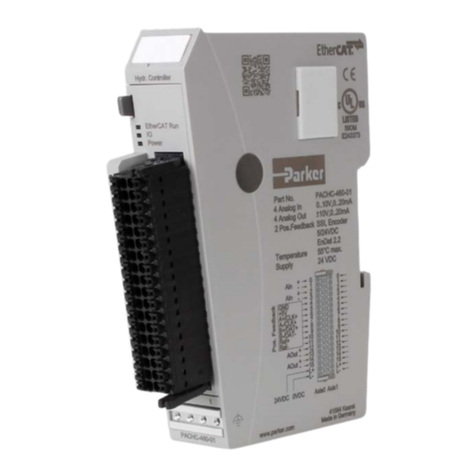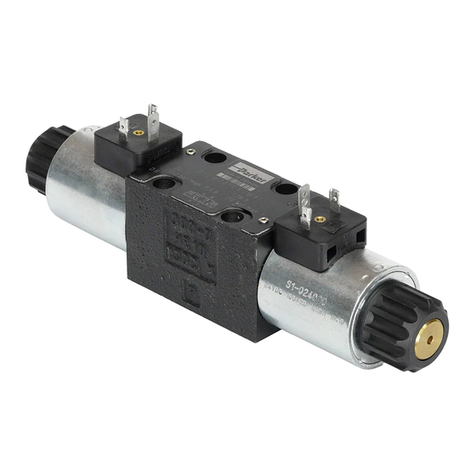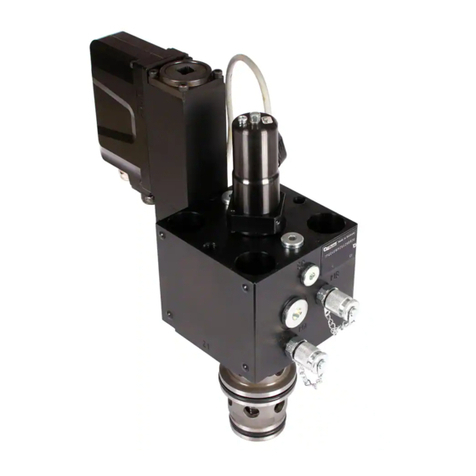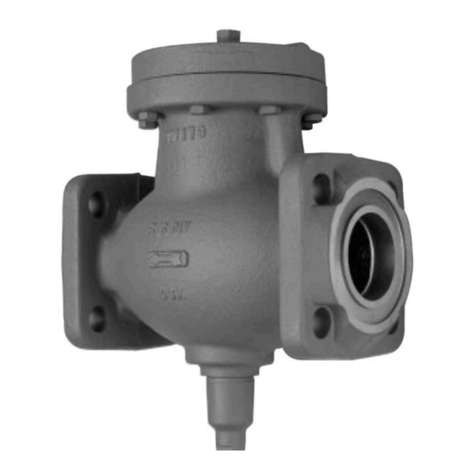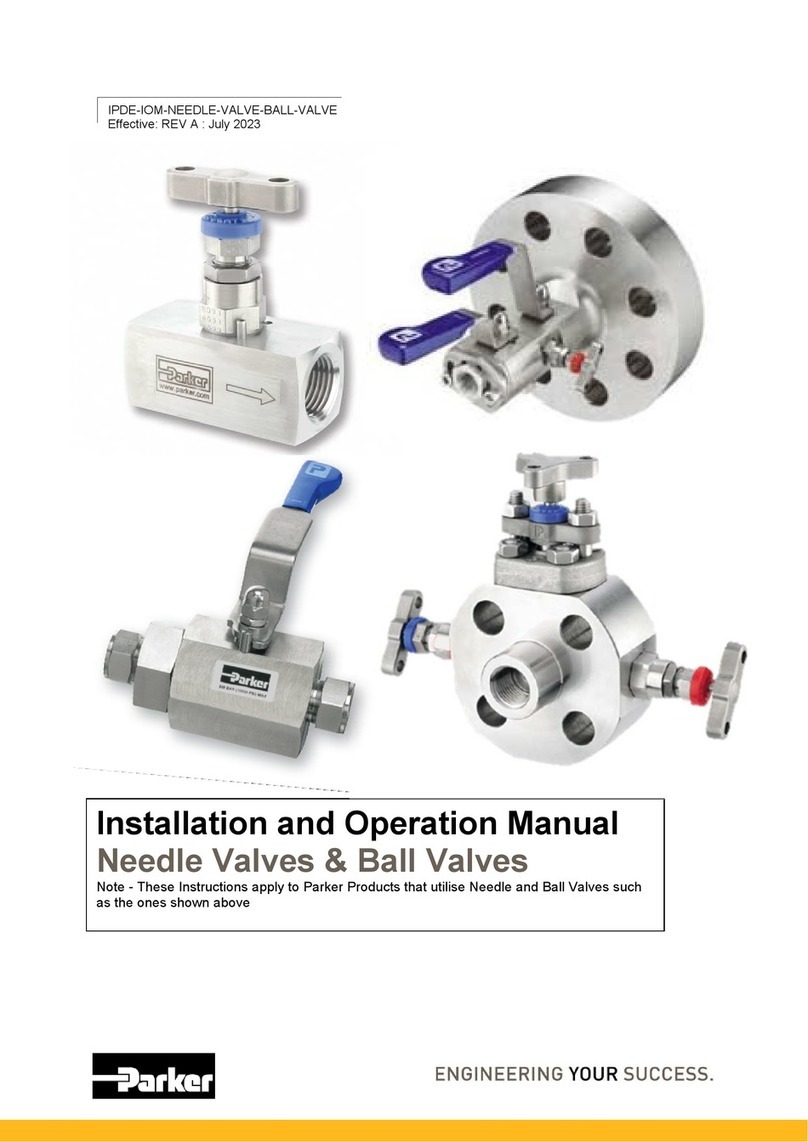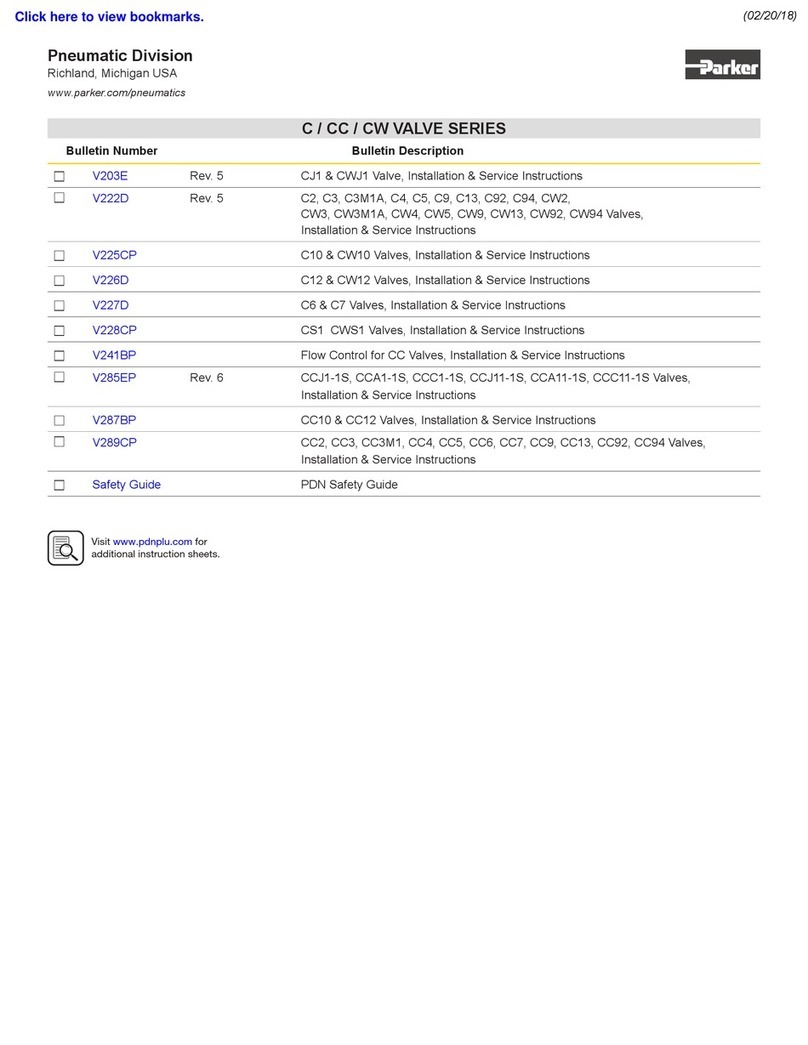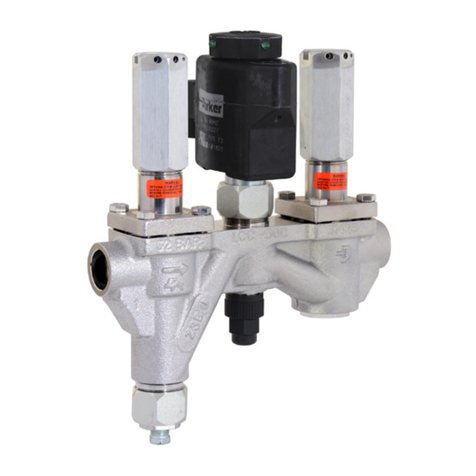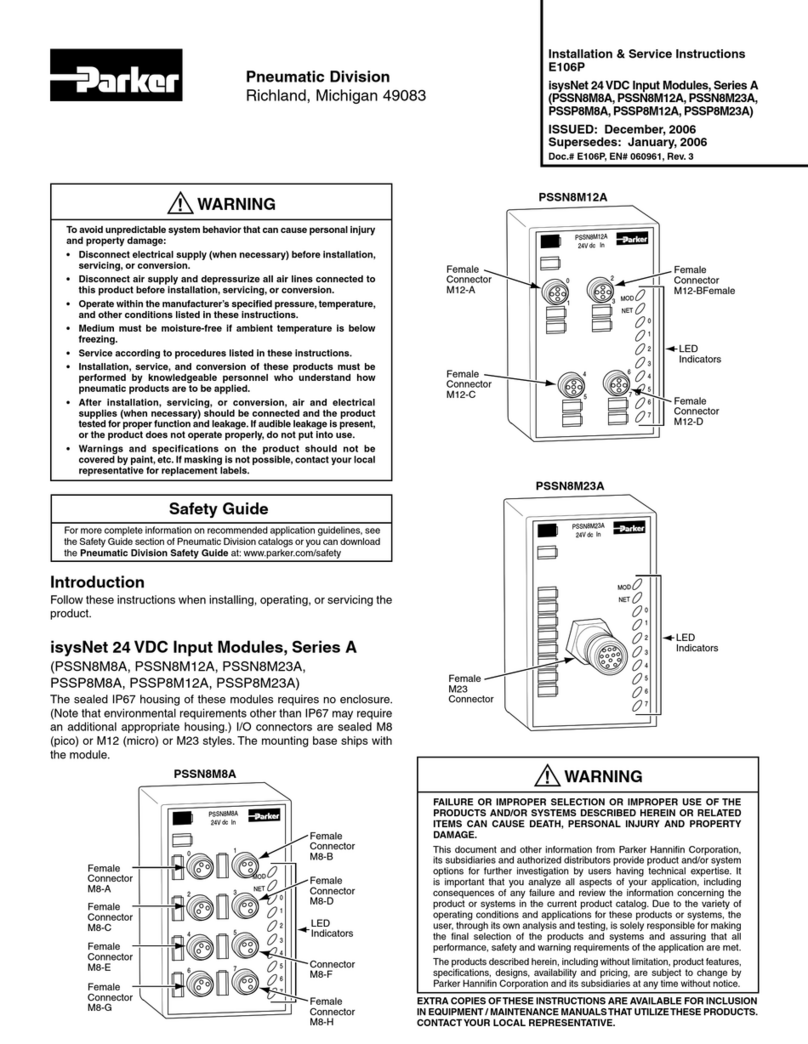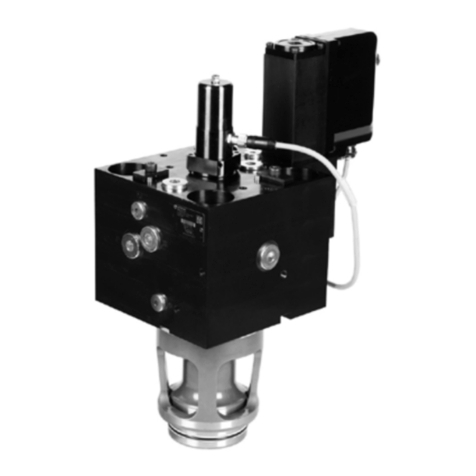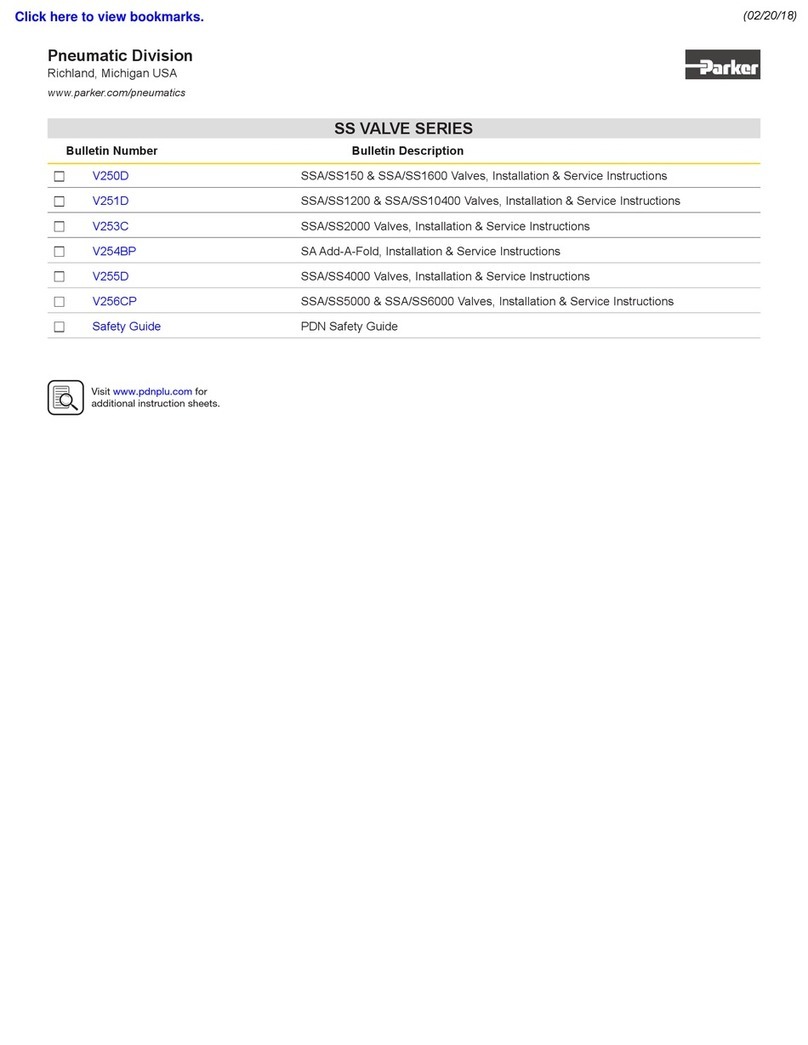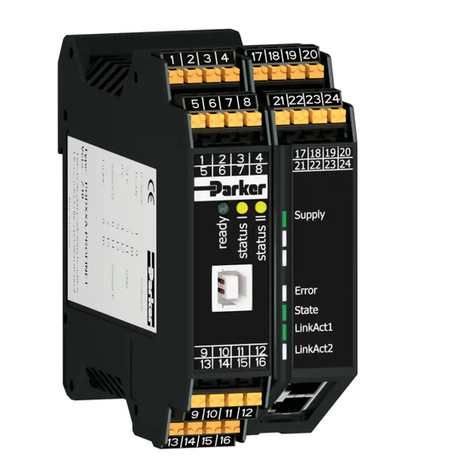
RefrigeratingSpecialtiesDivision 2
Installation
Refer also to Safety Installation Bulletin RSBCV. Do
not remove the protective covers from the inlet and
outlet of the valve until ready to install. They protect the
interior from dirt and other foreign matter.
Select a location for installation where the valve will be
easily accessible for adjustment and maintenance. Avoid
locations where personnel, traffic, material handling or
other equipment may damage the valve. If the valve
surfaces will be cold, avoid areas where ice may accu-
mulate in the body.
Before installing the valve, check to see that all chips,
scale, dirt and other foreign material are removed from
the pipes; also be sure the arrow on the valve body is
pointing in the flow direction. Remove the protective
covers from the valve.
Mount valves with R/S Industrial operators (S4A, S4W,
S5A, S7A, S7F and S8F) only in horizontal pipeline with
solenoid at the top; they will work properly only in this
position.
In a liquid line the Solenoid Valve should be near the
expansion valve inlet. It is advisable to install the RSF
close coupled companion strainer ahead of the valve for
protection against dirt and chips.
Install with the arrow on the valve body in the direction
of flow. If the valve is backwards, the flow will not be
stopped when the valve is electrically de-energized.
Solenoid Valves can stop flow only in the direction from
normal inlet to normal outlet (as shown by the arrow on
the body). If reversal of pressure occurs in the system
so the outlet pressure exceeds the inlet pressure the
main valve plug will be blown away from its seat and
reverse flow will occur. If a system has this type of
pressure reversal (as encountered during hot gas
defrost with liquid recirculation systems), a check valve
such as Refrigerating Specialties Division Type CK4A
will need to be added. Check valves must be installed
downstream to avoid trapping liquid.
If the valve is to be insulated be sure to allow access to
the manual opening stem and strainer cover.
Do not insulate the coil or coil housing.
Connect the solenoid lead wires only to an electrical
supply source as indicated on the solenoid coil. The
power source must be capable of supplying full, constant
voltage. The wires to which the solenoid leads are
connected must be of suitable gauge, and must be
insulated and enclosed appropriate to the voltage and
the environmental or conformity requirements.
Forpartsselectionsee Bulletin30-92,latestedition.
Forsolenoid coil availabilitysee RSBCVlatest edition.
MM INCH
A282 11.1
B102 4
C157 6.2
D216 8.5
E261 10.3
F239 9.4
H117 4.6
J180 7.1
N25 1
P13 0.5
DIMENSIONAL DATA
